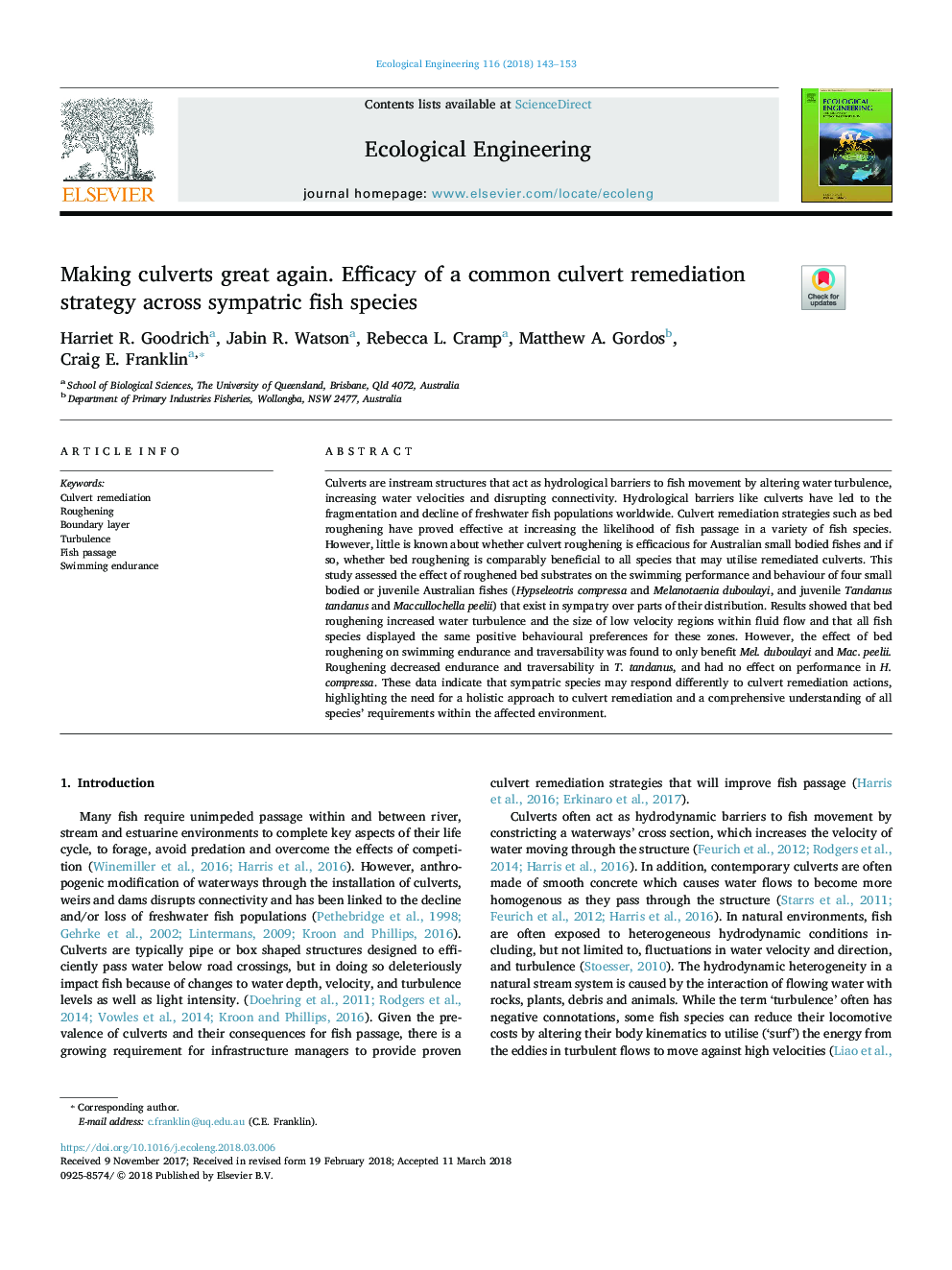| Article ID | Journal | Published Year | Pages | File Type |
|---|---|---|---|---|
| 8847924 | Ecological Engineering | 2018 | 11 Pages |
Abstract
Culverts are instream structures that act as hydrological barriers to fish movement by altering water turbulence, increasing water velocities and disrupting connectivity. Hydrological barriers like culverts have led to the fragmentation and decline of freshwater fish populations worldwide. Culvert remediation strategies such as bed roughening have proved effective at increasing the likelihood of fish passage in a variety of fish species. However, little is known about whether culvert roughening is efficacious for Australian small bodied fishes and if so, whether bed roughening is comparably beneficial to all species that may utilise remediated culverts. This study assessed the effect of roughened bed substrates on the swimming performance and behaviour of four small bodied or juvenile Australian fishes (Hypseleotris compressa and Melanotaenia duboulayi, and juvenile Tandanus tandanus and Maccullochella peelii) that exist in sympatry over parts of their distribution. Results showed that bed roughening increased water turbulence and the size of low velocity regions within fluid flow and that all fish species displayed the same positive behavioural preferences for these zones. However, the effect of bed roughening on swimming endurance and traversability was found to only benefit Mel. duboulayi and Mac. peelii. Roughening decreased endurance and traversability in T. tandanus, and had no effect on performance in H. compressa. These data indicate that sympatric species may respond differently to culvert remediation actions, highlighting the need for a holistic approach to culvert remediation and a comprehensive understanding of all species' requirements within the affected environment.
Related Topics
Life Sciences
Agricultural and Biological Sciences
Ecology, Evolution, Behavior and Systematics
Authors
Harriet R. Goodrich, Jabin R. Watson, Rebecca L. Cramp, Matthew A. Gordos, Craig E. Franklin,
